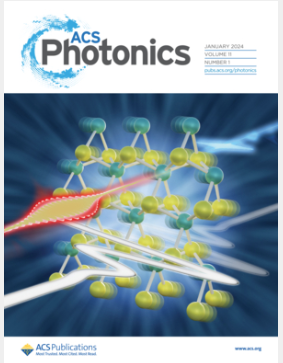Increased Modal Gain in 1.55 μm Quantum Dot Lasers Based on Improved Size Homogeneity Obtained by Comprehensive Growth Optimization
IF 6.7
1区 物理与天体物理
Q1 MATERIALS SCIENCE, MULTIDISCIPLINARY
引用次数: 0
Abstract
InAs quantum dot (QD) lasers exhibit improved properties compared to quantum well lasers like higher temperature stability, lower threshold current density, and significantly reduced laser line width. This study aims to further optimize InAs-QD morphology and optical material properties in order to narrow the gain spectrum of the ground state transition, improving the laser performance. Self-assembled InAs QDs were fabricated on InAlGaAs layers lattice-matched to InP by using molecular beam epitaxy. Atomic force microscopy characterization and low-temperature photoluminescence spectroscopy were used to assess the size uniformity, emission wavelength, QD density, and reproducibility. In addition to optimizing growth parameters, the impact of an additional ultrathin nucleation layer (NL) on the QD formation process and related size homogeneity was investigated. High resolution scanning transmission electron microscopy confirmed the significant role played by the NL and the exact composition of the QDs and their surrounding layers. By optimizing the growth temperature, the V/III ratio, and by introducing a GaAs-NL, a photoluminescence line width of 17.6 meV at 10 K from a single QD layer and a record narrow line width of 18.4 meV for a stack layer of six QD layers were demonstrated. The structures with NL exhibit a blue shift in the peak wavelength by maintaining uniformity compared to QD reference structures. Additionally, processed broad-area lasers based on the optimized QD layers demonstrate a record high modal gain of 26.5 cm–1 per QD layer.

基于改进尺寸均匀性的1.55 μm量子点激光器模态增益提高
与量子阱激光器相比,InAs量子点(QD)激光器具有更高的温度稳定性、更低的阈值电流密度和显著减小的激光线宽等性能。本研究旨在进一步优化InAs-QD形貌和光学材料性能,以缩小基态跃迁的增益谱,提高激光器性能。采用分子束外延技术在与InP晶格匹配的InAlGaAs层上制备了自组装的InAs量子点。使用原子力显微镜表征和低温光致发光光谱来评估尺寸均匀性、发射波长、量子点密度和再现性。除了优化生长参数外,还研究了额外超薄成核层(NL)对量子点形成过程和相关尺寸均匀性的影响。高分辨率扫描透射电子显微镜证实了NL的重要作用以及量子点及其周围层的确切组成。通过优化生长温度、V/III比和引入GaAs-NL,在10 K时,单个QD层的光致发光线宽达到17.6 meV,六个QD层的堆叠层的光致发光线宽达到18.4 meV。与QD参考结构相比,具有NL的结构通过保持均匀性在峰值波长上表现出蓝移。此外,基于优化的QD层的加工广域激光器显示出每个QD层26.5 cm-1的创纪录高模态增益。
本文章由计算机程序翻译,如有差异,请以英文原文为准。
求助全文
约1分钟内获得全文
求助全文
来源期刊

ACS Photonics
NANOSCIENCE & NANOTECHNOLOGY-MATERIALS SCIENCE, MULTIDISCIPLINARY
CiteScore
11.90
自引率
5.70%
发文量
438
审稿时长
2.3 months
期刊介绍:
Published as soon as accepted and summarized in monthly issues, ACS Photonics will publish Research Articles, Letters, Perspectives, and Reviews, to encompass the full scope of published research in this field.
 求助内容:
求助内容: 应助结果提醒方式:
应助结果提醒方式:


